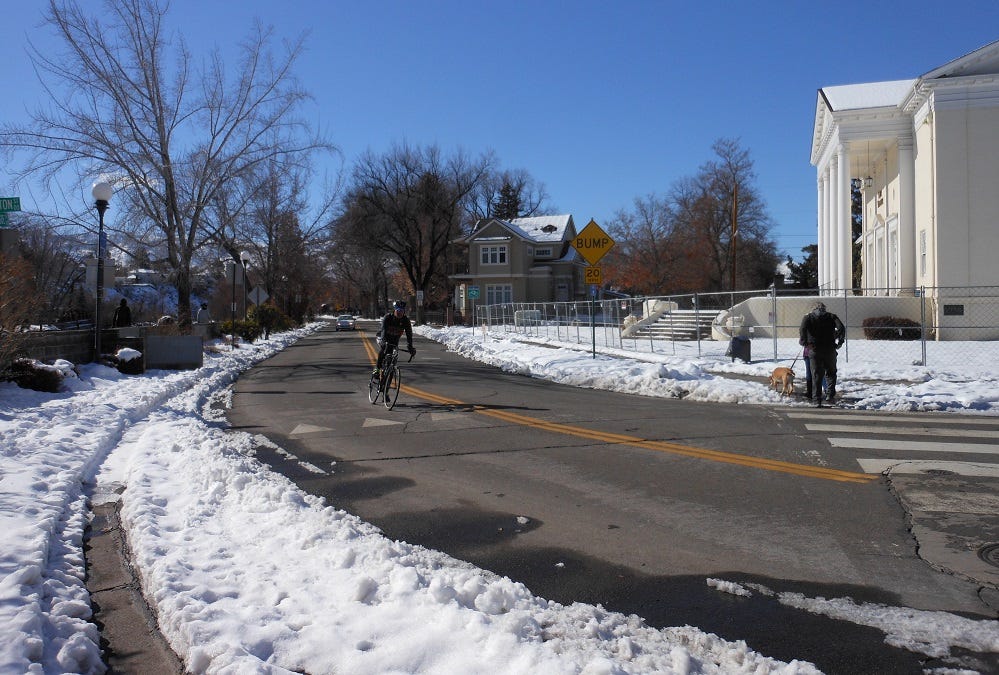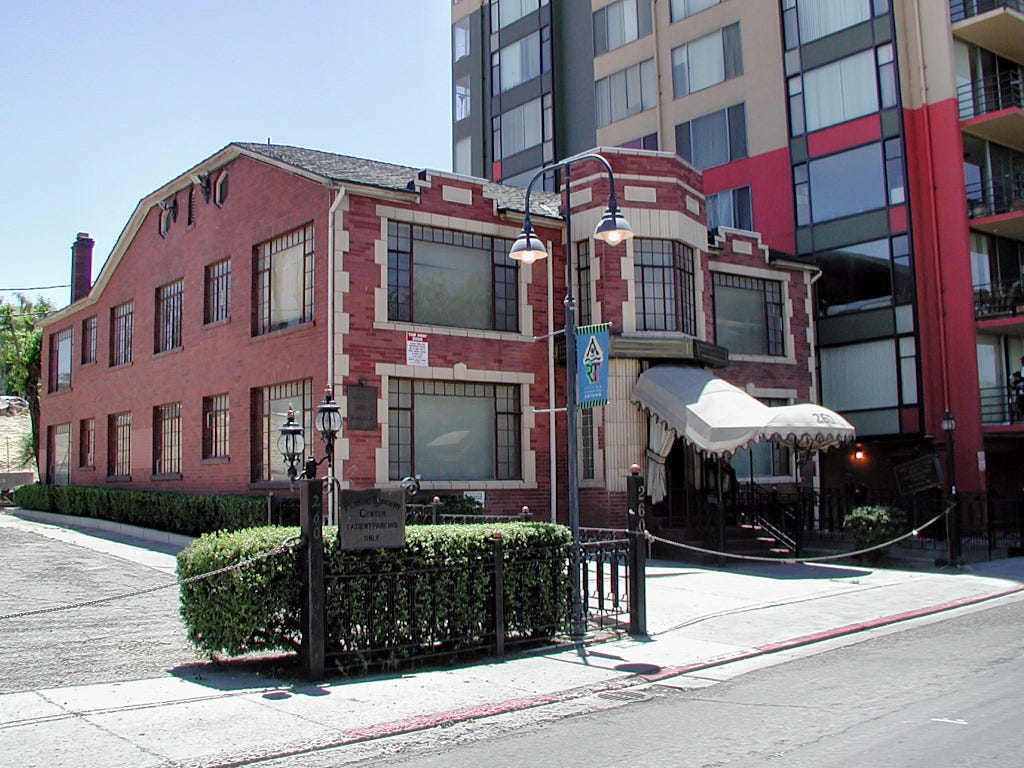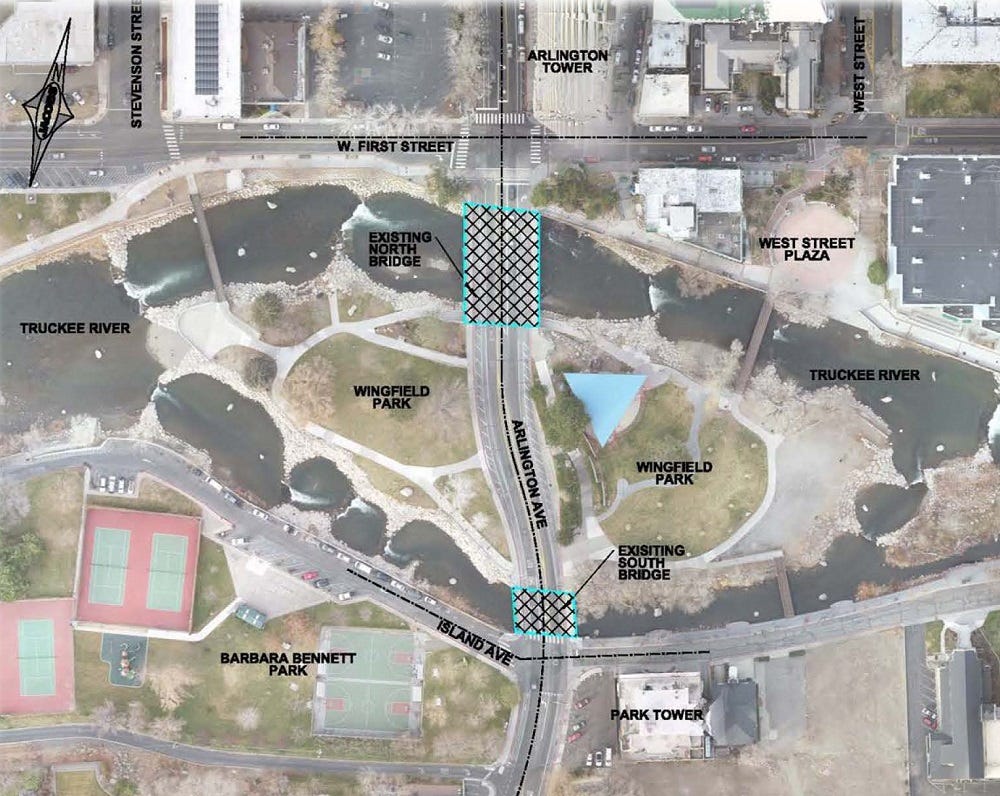Flexing the Power of the People
Our voices matter whether a project is public, private, or somewhere in between
What role can the public play in physically shaping our community—what’s built (and not built) there, what it looks like, what stays, what goes, and how it all connects?
The answer, not surprisingly, is that it depends. When a project involves public spaces, places, or funding, residents should always be encouraged to weigh in. Sometimes we have to be identified as “stakeholders” (a term whose definition varies) to participate at certain stages. And sometimes the public has no recognized role whatsoever but can persuade receptive private landowners and developers to consider other perspectives and alternatives—ideally resulting in an outcome that both meets their own needs and generates tremendous community goodwill.
Whatever the scenario, asserting our voices as members of an informed and interested public is like exercising a muscle; it gets stronger the more we use it. So in this edition of The Barber Brief I’ll discuss several ongoing projects—some public, some private, and some a little of both—and maybe today’s the day you’ll decide to flex the muscle of your public voice. You have nothing to lose, and our community has everything to gain.
Lessons from the Steamboat Canal Project
You may already have heard that on February 1st the National Resources Conservation Service (NRCS) announced that planning for the Steamboat Canal Project has been halted, citing the high volume of public comments they had received and an intent to reevaluate the project’s feasibility, scope, extent, and other factors. You can read my earlier post about this issue here and more on this latest development from the NRCS here, with additional coverage from the Reno Gazette-Journal here and the Reno News & Review here.
This turn of events clearly demonstrates the impact that public voices can have, but it also offers a lesson for those tasked with “public outreach” for projects like this one, outreach that clearly hadn’t reached many of the residents whose daily routines it might most affect. It’s not clear what comes next for the Steamboat Canal, but Reno City Councilmembers Naomi Duerr and Jenny Brekhus in particular engaged extensively with constituents about it, and will likely help spread the word should the project resume.
The Arlington Avenue Bridges Project
Another public project currently in the planning stages is replacement of the two Arlington Avenue bridges, where Arlington crosses the Truckee River on either side of Wingfield Park. This is the first downtown bridge project to get underway since the Virginia Street bridge was replaced, back in 2016.
The Regional Transportation Commission of Washoe County (RTC Washoe) is heading up the feasibility study for the Arlington bridges, and hosted an initial public meeting in December 2019, where several options were introduced. Since then, a Stakeholder Working Group and Technical Advisory Group have met several times, narrowing the possible bridge types down to two: single pier or clear span (both options retain the two-bridge configuration rather than replacing them with one longer bridge).
The RTC will reportedly present a report on the project’s status, the two design options, and what comes next at the February 24th Reno City Council meeting. Another (virtual) public meeting and survey are planned for March, with completion of the feasibility and alternatives analysis phase anticipated by April. The schedule and funding for the construction of the project have not been finalized. More information is available on the RTC’s project website here, where you can view a fact sheet and all the presentations from prior meetings.
Subscribe to the City of Reno’s newly improved DRM
Ever wonder how certain people seem to know about proposed new developments before anyone else? Wonder no more! The secret is most likely found in three little letters: DRM.
The Development Review Memos (DRMs) generated by the City of Reno’s Community Development department are regular memos outlining the development projects that have recently been submitted to the City for “discretionary review.” This doesn’t include all developments, just those that require a special use permit, zoning change, or related decision from the Planning Commission and/or City Council in order to proceed.
The memos include links to the full applications, maps, images, and scheduled dates for review by the Commission and/or Council (they will hopefully soon once again include meeting dates for the Neighborhood Advisory Boards—which, if you haven’t heard, still haven’t been reinstated. See my previous post on the NABs for how you can encourage that to happen ASAP).
The DRMs weren’t originally conceived as public memos, although anyone could request to be added to the mailing list. They were, rather, intended for use by members of the various City Commissions and Boards that would review aspects of these projects. However, the City has just restructured the DRMs to encourage public use and comments, and even put together a handy Development Review Guide to explain how to access and understand all the info they contain.
You can view the February 13th edition of the DRM here and add your email address to the mailing list, and I’m assuming the City will continue to post them on its DRM page although I see the two in the new format haven’t been placed there yet. Anyway, kudos to the City on this terrific step, which will go a long way in giving residents advance notice of proposed new developments.

A Moment of Truth for the Lear Theater
Turning now to the category of “private projects that feel public,” I have an update on the Lear Theater, which I wrote about in a previous post. Artown, which was granted stewardship of the historic church building and associated parcels in 2011, is a private nonprofit, but the high level of community interest—not to mention the significant public funding previously directed toward both the Lear’s restoration and to Artown itself—make the Lear Theater feel like a community responsibility.
You can read all about what’s happened since Artown’s ill-fated 2018 public Request for Proposals in Frank X. Mullen’s excellent overview in the Reno News & Review, with reactions (including mine) to developer Ken Krater’s problematic proposal to make permanent changes to the entire vicinity.
This past Thursday (February 11th), Mr. Krater appeared at the virtual meeting of the City’s Historical Resources Commission (HRC) with more details about his proposal. He also revealed for the first time that he was asked to put together a plan “to save the theater” approximately 18 months ago by “a community member” who believed him uniquely qualified to do so, a request that somehow evolved into an exclusive right to explore a development plan for the property.
The HRC would eventually need to issue “Certificates of Appropriateness” for any alterations to the historic building’s exterior or grounds, and Mr. Krater clearly wanted to know if he had their general support. He has, he stated, already devoted considerable time and resources to this plan, and is keen to know if he should continue with it or “move on,” something the HRC can’t possibly tell him without visual representations of what he proposes to do.
In addition to the components he’s described previously, Mr. Krater introduced new details of his proposal, including reconfiguring the north (1st Street) side of the historic building to carve out nine individual apartment units with pedestrian-level entrances; reducing the capacity of the theater inside to 250 seats; and replacing the surface parking lot west of the theater with a multi-story parking structure.
What Mr. Krater’s plan hinges upon above all is the closure of the surrounding streets to vehicular traffic, in order to construct a private riverfront apartment complex described as a necessary “revenue stream” for the theater’s restoration and operation. He had no response when one commissioner asked why such a “revenue stream” would need to be erected next door—because there is no logistical reason why it should be; it’s just where he wants to build.
A private proposal that rests upon the privatization of public streets should be up for public discussion, even at this early date, so I think it’s time for the City of Reno to take an active role in gathering public comments about the permanent street closure the Krater plan would require. Since the property is in Ward 1, the place to start might be by sending an email to Ward 1 City Councilmember Jenny Brekhus at brekhusj@reno.gov with your thoughts. In a recent conversation I had with Artown Executive Director Beth Macmillan and a few members of the Artown board, I was told that while they are not currently accepting other proposals for the Lear Theater, they are open to ideas, so the public should feel free to reach out to them, too.
As for me, I’ve heard enough of his plan to say without hesitation to Ken Krater: It is time to move on. The Artown board needs the freedom to formally evaluate other proposals for this important building—proposals that prioritize its historical integrity and the legacy of its storied architect, and that do not hold the restoration of the Lear Theater hostage to a plan to privately profit from abandoning a public right-of-way. And it may simply be time for Artown to transfer the property to another entity that can take over its stewardship until a permanent solution can be identified, allowing Artown’s board and staff to focus on their organization’s core mission.

The Regina Apartments at 260 Island Avenue
I’ll end with a property that’s privately owned but publicly beloved. You may not know its name but chances are you’ve walked or driven past and marveled at the ornately detailed two-story apartment building in the eastern shadow of the Park Towers condominiums. This beautiful but long-vacant 1941 building, known as the Regina Apartments, was purchased from Dr. John Iliescu in 2019 by CAI Investments for $2.5 million as part of plans to build the massive Kimpton Hotel project on the former site of the Wingfield House, which burned down in 2001.
I have been told that CAI Founder and CEO Chris Beavor wants to preserve the building but is not convinced it can remain in place. I’m hoping a way can be found to keep it there as a component of the new riverfront façade. Imagine how charming it could be as, say, a speakeasy or restaurant. If placed on the city’s historic register, the usual parking requirements for commercial properties could be waived, and the HRC would be an invaluable resource for discussing potential options for this exquisite structure. Sometimes all it takes is a new perspective and a little imagination to create something truly unforgettable.
BRIEF TIP: Subscribe to these e-newsletters
E-newsletters (like this one!) are increasingly getting more popular among elected officials as a way to keep their constituents informed about ongoing issues of interest to their constituencies. Local politicians whose newsletters have potential relevance to Reno development include Ward 1 Reno City Councilmember Jenny Brekhus, whose newsletter you can subscribe to here and read previous issues here. Another is newly-elected Washoe County District 1 Commissioner Alexis Hill, whose newsletter you can subscribe to here. If you hear of any others, please let me know.
Another newsletter that anyone interested in Reno development should subscribe to is that of the Downtown Reno Partnership, the nonprofit downtown Business Improvement District. The DRP is not a government entity, but its economic development arm is actively engaged in securing more investment downtown and last year its Board coordinated an effort to transform the ReTRAC lids, a project that involved surprisingly little (if any?) public input for a central public space. Sign up for their newsletter here and consider attending their upcoming Town Hall on February 25th to keep up with their activities. They also recently announced that they’ll be launching an upcoming survey about downtown Reno, which you can register to participate in here.
As always, you can view my previous e-newsletters, with more context, analysis, and tips, on my Substack site, https://thebarberbrief.substack.com/. Have a great week!





I found your Substack newsletter while going down a rabbit hole of the history of one of Reno’s first township homes on West Street that is part of the Jacob Entertainment buy up. I absolutely love the old historic buildings of Reno, and hope that they can be saved and not torn down, specifically the Regina Apartments. I love your idea of that building becoming some sort of speakeasy! How about a bakery? So many options. What I wouldn’t give to get a peak inside! Also, it would be absolutely DEVASTATING if the street on the riverside of the Lear Theater gets closed down to build Private! Apartments! My husband and I have a favorite walk, and I sometimes jog, between Wingfied Park and Idlewild along the river path there, as do the hundreds of others on a regular basis. ( we already have to pass by the eyesore of new apartments being built next to the Hub coffee shop!) I also just signed up for the city council member ward 1 newsletter as you linked to, so I am hoping to participate in any public comments on either of these specific buildings and their future. Thank you!